How Racing Fathered Porsche's 959 and Carrera GT
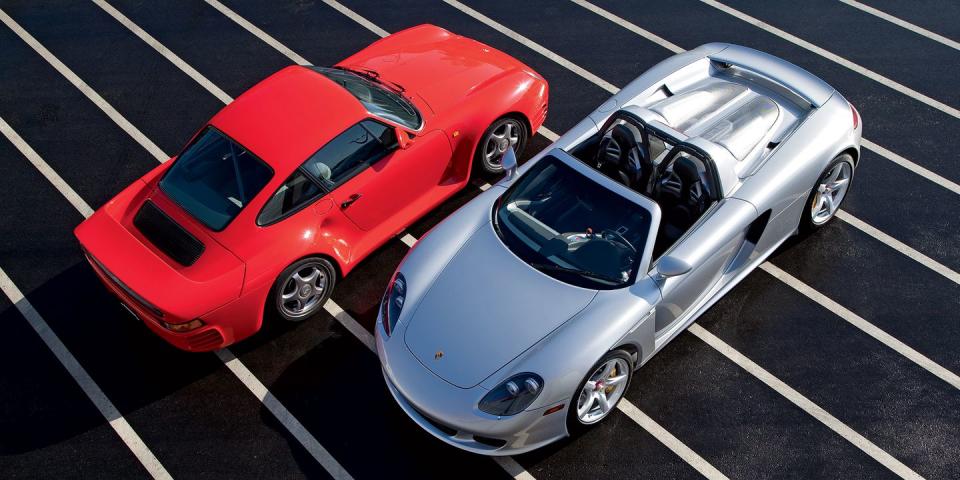
As we said back then, “Man, what a bummer.”
This story originally appeared in the September, 2009 issue of R&T - Ed.
By the mid 1980s we’d been in the street-machine-performance-car doldrums for more than a decade. Muscle cars were long dead, Corvette V-8s sank as low as 200 bhp, Ferrari Boxers were illegal in the U.S. and high performance cubic inches seemed empty.
Behind this slump were good reasons, bad reasons and political solutions, but the results were stultifying. Couldn’t get out of our own way…
Turbochargers provided some relief-as they do today-but the good turbo machines were an exception. Porsche’s Turbo was about the best, but the 959 would soon rewrite the supercar script. Then, as now, racing would improve the breed.
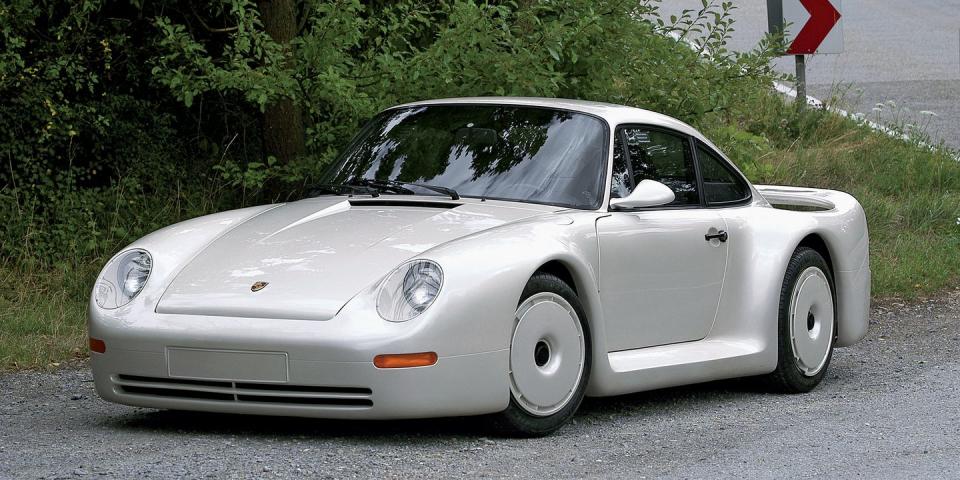
In 1983, it was Group B, the most intriguing class that existed from that year until 1986. Intended for rallies and race tracks, Group B cars were built to no-holds-barred rules that demanded only 200 be assembled. Think lightweight, 500 bhp, all-wheel drive and the likes of the Audi Quattro S1, Ford RS200, Peugeot 205 Turbo 16 and Lancia Delta S4.
Group Bs were blindingly quick. Finnish rally ace Henri Toivonen could have notched 6th grid spot for the 1986 Portuguese Grand Prix with his rally S4, but he also died in his Lancia in that year’s Tour de Corse as the Group B cars proved almost too fast to race, and the class was eliminated.
Porsche’s intended entry was unveiled at the 1983 Frankfurt Auto Show as the smooth, white Gruppe B concept (photo above), what would become the 959.
Legendary engineer Helmut Bott knew Porsche needed to develop all-wheel drive for the rear-engine 911 and the basis for that would be the 959 program. The heart of the system was the Porsche-Steuer Kupplung 13-disc center diff that varied the front-rear power split, which the driver controlled via a 4-position lever: dry tarmac, wet tarmac, snow or off road.
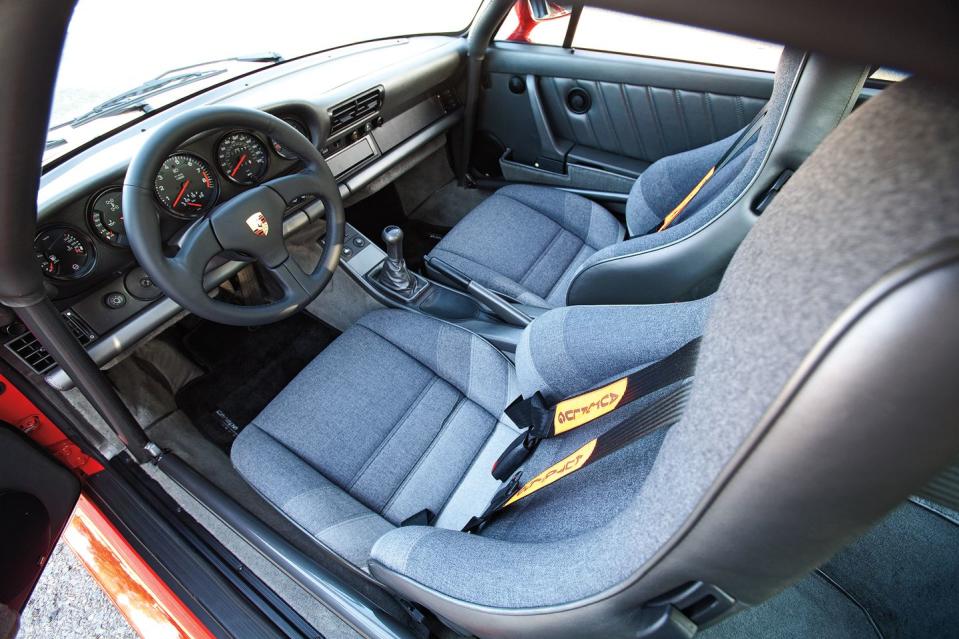
That power was 450 bhp at 6500 rpm and 369 lb.-ft. of torque at 5500 rpm from only 2.8 liters. Porsche’s flat-6 had been through competition development for the 935/936/956/962 race cars and now had an air-cooled block and water-cooled heads. For the 959, the 4-cam, 4-valve-per-cylinder engine was fitted with two sequential intercooled turbos. The first boosted to 4300 rpm when the other came in, producing acceleration as smooth as it was dramatic. How about 0–60 mph in 3.6 seconds with a top speed of 195 mph…22 years ago? (31 years ago now. - Ed)
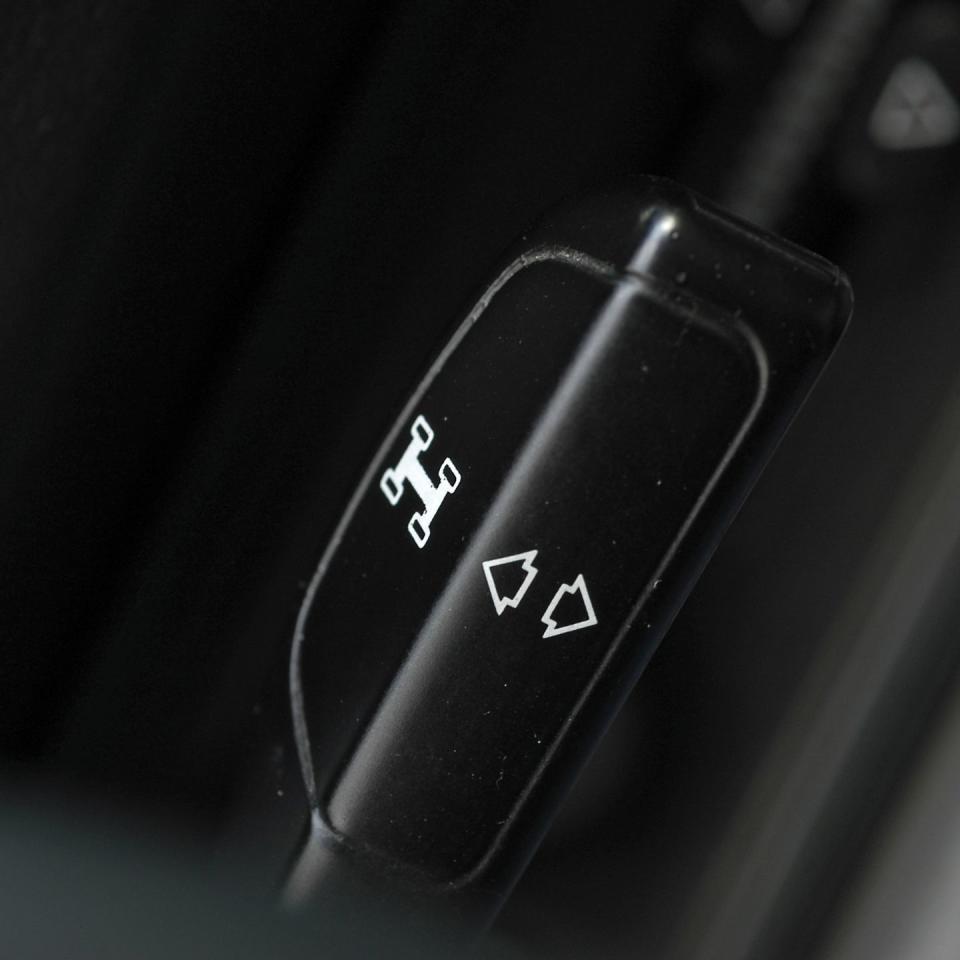
These days, electronic controls hum throughout exotic cars, but back then things weren’t as automatic. Settle into the 959 seat and you have a sense of vintage spacecraft-and of systems over which you have control, but with automatic backup. You feel less like a driver than a commander.
In addition to the lever for the 4-mode traction system is a dash switch that sets ride height on the 959 street version’s upper and lower A-arm suspension…4.7 in. to 5.9 in. to 7.0 in. But an onboard computer makes certain you are no higher than 5.9 above 49.7 mph or 4.7 when topping 99.5 mph. This last speed is when the computer also firms the shocks to hard, another switch allowing the driver to select soft or medium below that speed.
There’s that systems approach again, along with features considered common today but advanced then: ABS for the cross-drilled Brembo brakes, run-flat tires and tire-pressure monitoring.
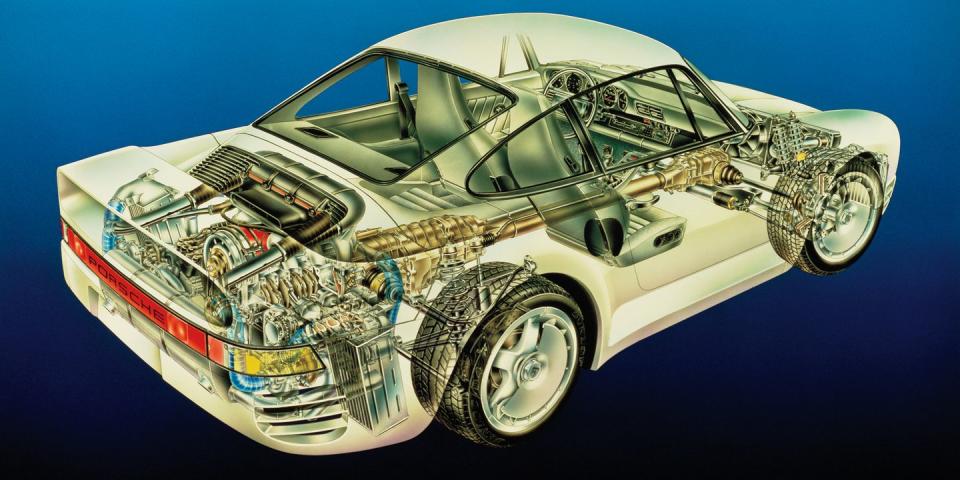
All this tickled our technical fancies then, but the 959’s exterior design closed the deal. How the car seems affixed to the road, those wide doorsills, the laid-back headlights, the vent detailing and the broad rear fenders rolling back into that sensuous engine cover. The basic 911 shape was resculpted not just to emphasize the 959’s muscles, but to give a claimed zero lift. To keep weight down, the front fenders, rear quarters, roof and that engine cover are Kevlar, the doors and hood aluminum.
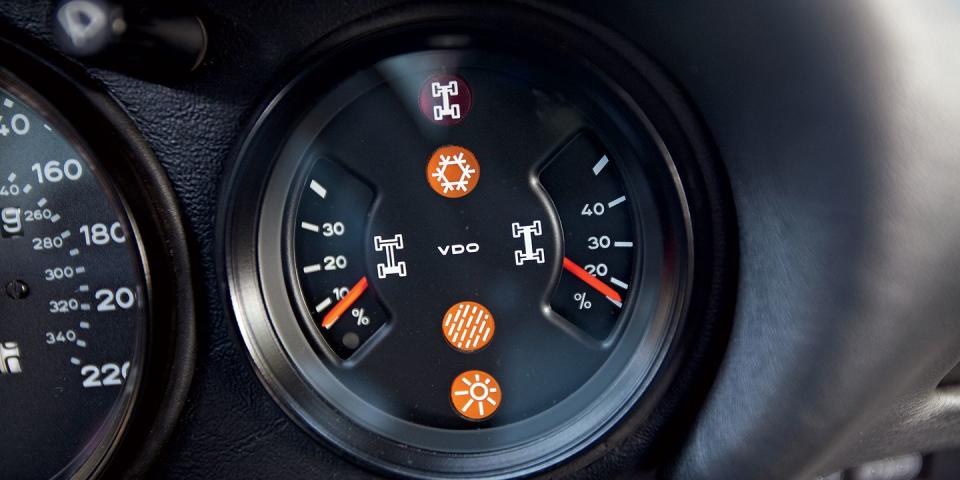
Porsche wasn’t the only automaker caught out by Group B’s elimination. Jaguar had planned on the XJ220 being a Group B racer, and Ferrari was working on the 288 GTO Evoluzione. The latter provided the basis for Ferrari’s F40, arguably the era’s true rival to the 959, though they are quite different machines.
Cost was also a killer. The price of a 959 was around $350,000 but it reputedly cost Porsche $500,000 to hand build each supercar. To cut its losses, Porsche topped production at 226 in 1989 and never did a U.S. edition. Yet the 959 was so highly regarded that several well-heeled U.S. enthusiasts, including Microsoft’s Bill Gates and Paul Allen, imported them and in the early 1990s the factory built perhaps a dozen more cars and sold them for $1 million each.
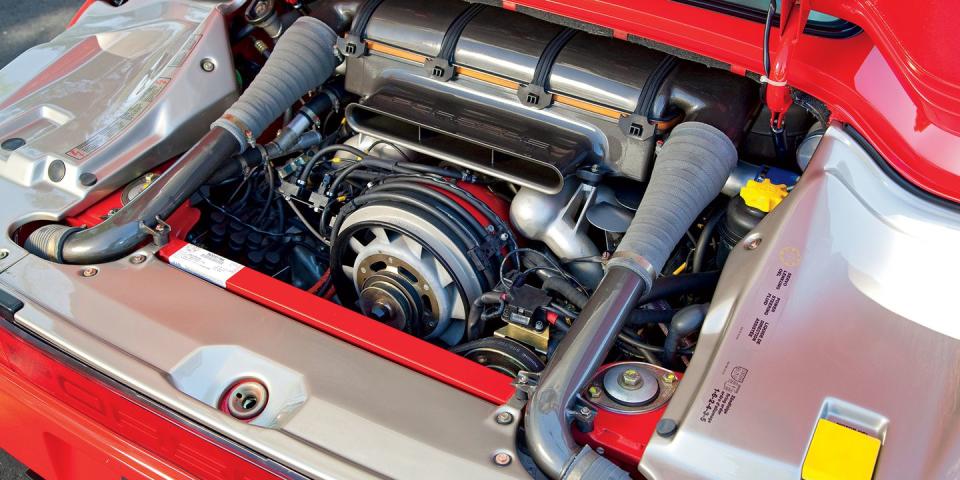
U.S. 959 owners couldn’t do much with their cars legally until 2000. A driving force behind the “show and display” rule-often called The Gates Law- that allows U.S. 959s was Bruce Canepa and his well known design house in Scotts Valley, California. Not only can owners like Gates, Allen, Ralph Lauren and Jerry Seinfeld now drive their cars, but Canepa imports 959s and makes them legal. Better yet, they are upgraded to 640 bhp and 570 lb.-ft. of torque, with 0–60 dropping to 3.0 seconds and the top speed climbing to 222 mph. Like the 959 Sport, the Canepa cars have a fixed-height suspension, with updated struts and springs.
For all its racing heritage and intent, the 959 had little competition work. A pair finished 1-2 in the 1986 Paris-Dakar rally and the 961 racing version took its class and 7th overall in the year’s Le Mans, but that was it. At that point, Porsche victories at Le Mans were the norm. By 1998 when it won yet again, this time with the outrageous GT1, there had been 16 Porsche-powered overall wins at Le Mans since 1970…and thus far, no more. (Since publication, Porsche won overall at Le Mans three more times. - Ed.)
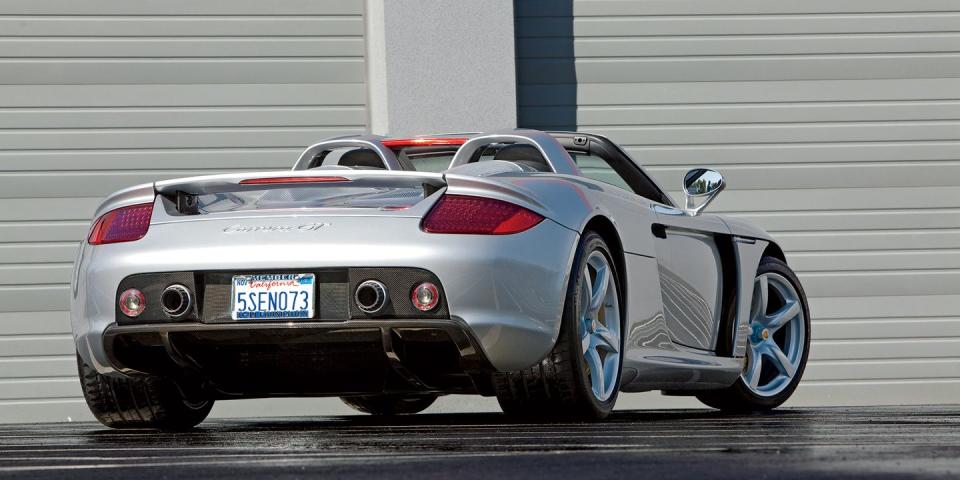
Porsche had planned a Le Mans return with a V-10-powered open GT1 successor, but that was scuttled in favor of a commercial necessity, the Cayenne SUV. We gnashed our teeth over this heretical move until the Paris auto show in 2000. At a dark and stormy 6 a.m., down in the bowels of the Louvre, Porsche uncovered the Carrera GT and redeemed itself. Again, racing has shown a way to improve the breed of road cars.
Using the thinking and components of that stillborn Le Mans car, Porsche created its newest supercar. Like the 959, it is a technical tour de force: a 220-lb. carbon-fiber-reinforced-plastic monocoque, with carbon fiber also used for many body panels. The 40-valve 5.7-liter V-10 is aluminum with an odd 68 degrees between banks, 605 bhp at a humming 8000 rpm and 435 lb.-ft. of torque at 5750 rpm. To keep the engine low in the $440,000 Carrera GT, Porsche gave it a dry sump (not unusual) and created a 7.7-lb., 6.6- in.-diameter Ceramic Composite Clutch (quite unusual) to go with the 6-speed manual gearbox.
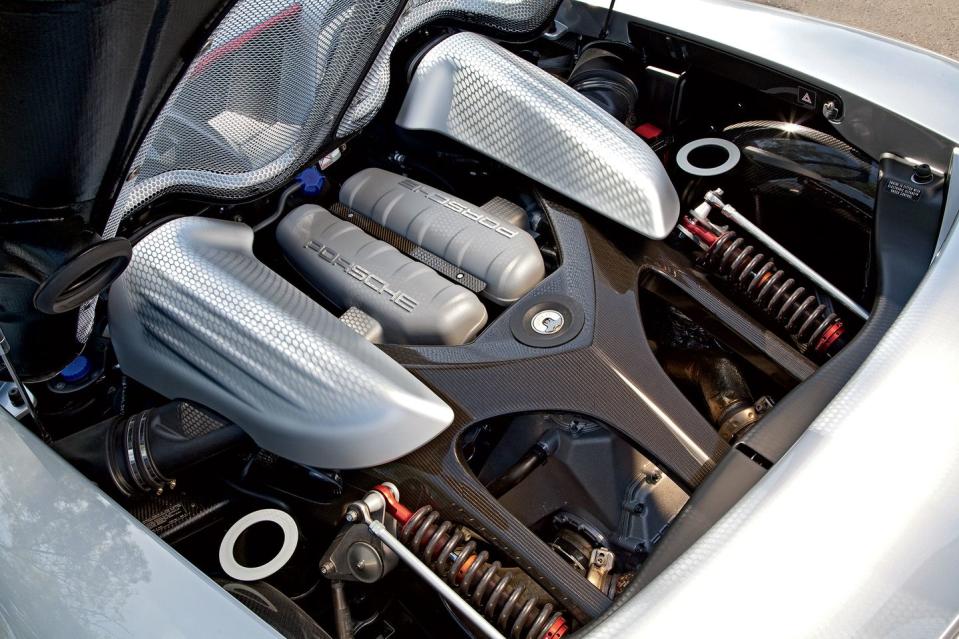
R&T got a Carrera GT to 60 mph in 3.6 sec. and the top speed is said to be 205… about even with the original 959. Its A-arm suspension and wide Michelin Pilot Sports got the mid-engine, rear-drive GT around the skidpad at an impressive 0.99g.
And then there’s the shape of the Carrera GT, penned by Milwaukee’s own Grant Larson, who also did the original Boxster. Where the 959 epitomized the 911 style, the Carrera GT keeps an eye on Porsche heritage, but kicks it into the 21st century.
But not too far, as the Carrera GT’s production run ended in 2006 after 1270 were built in Leipzig.
You Might Also Like

 Yahoo Autos
Yahoo Autos 